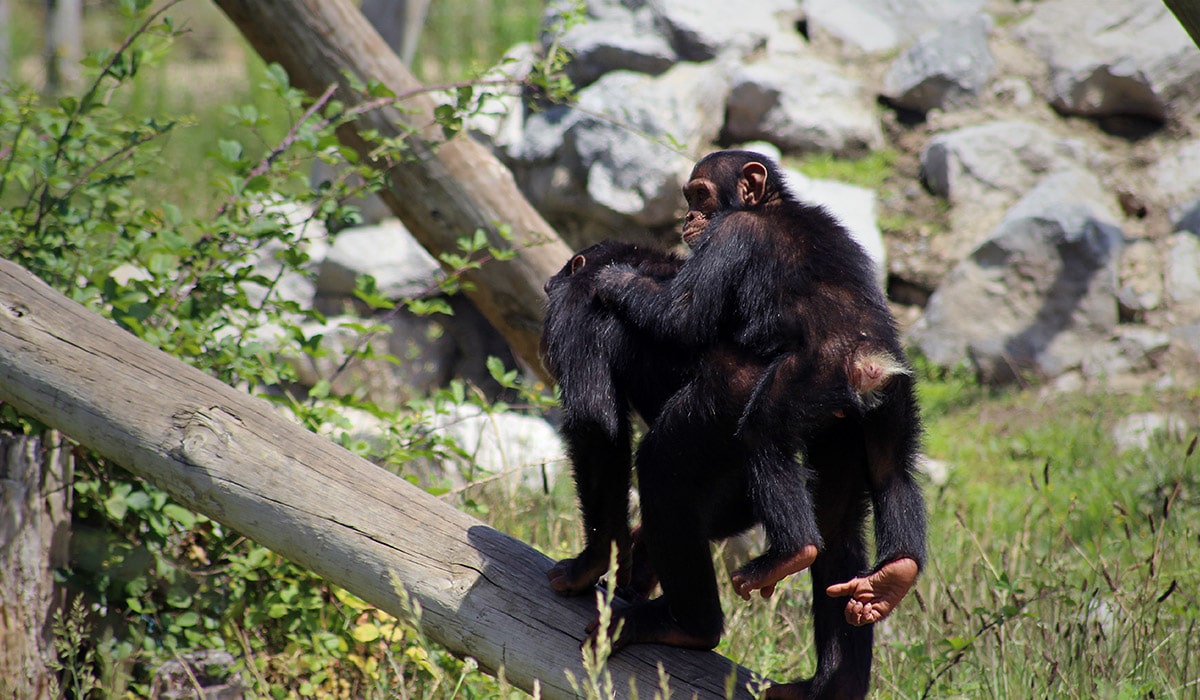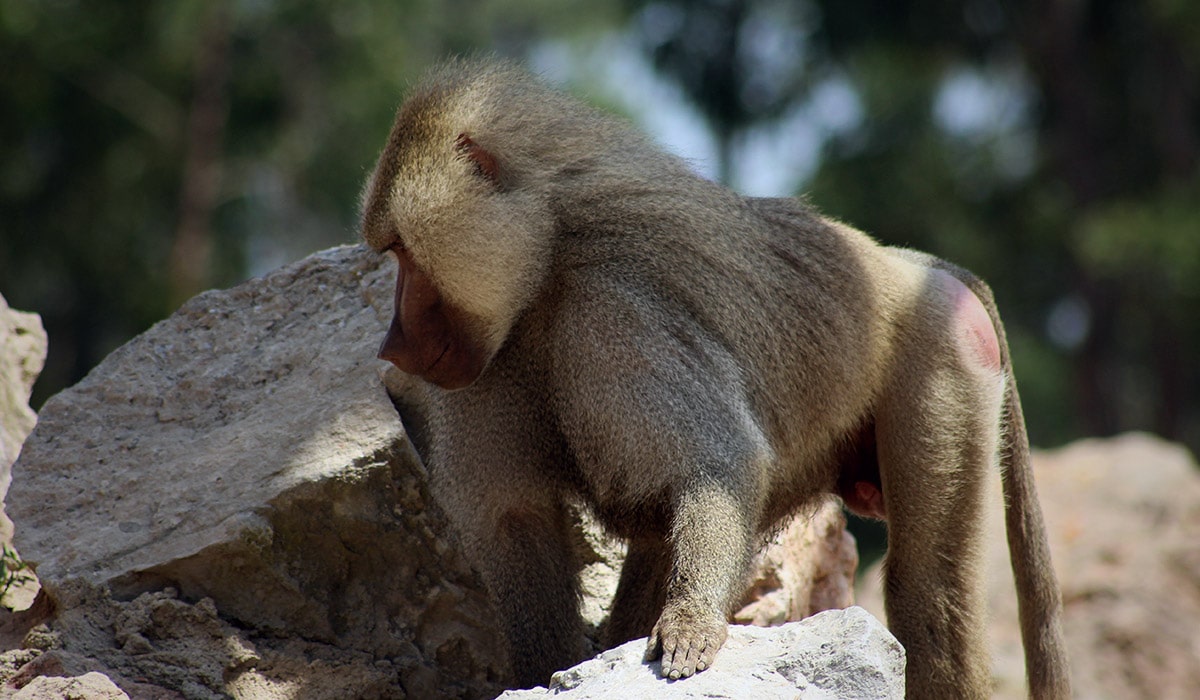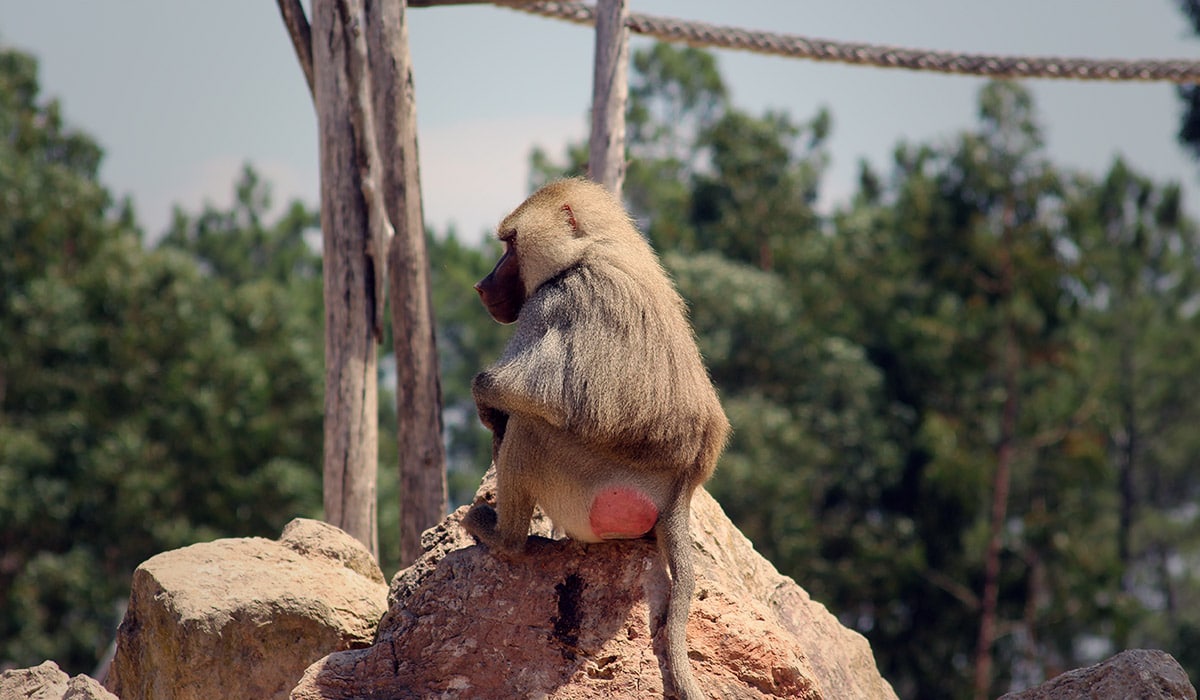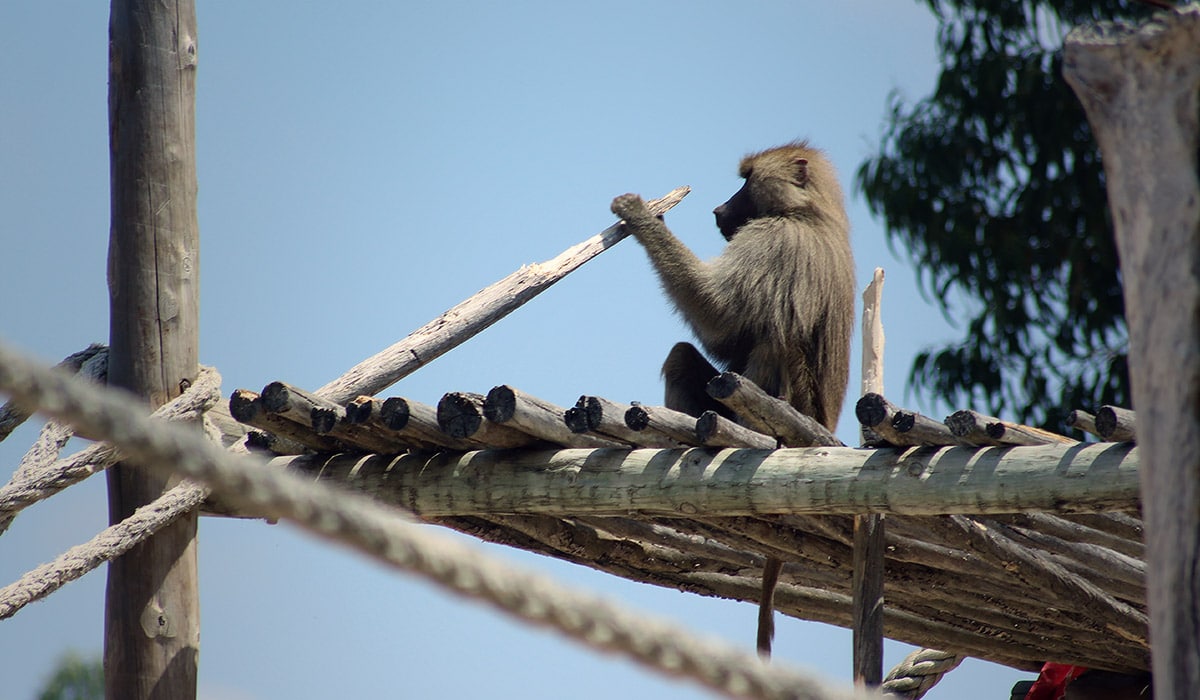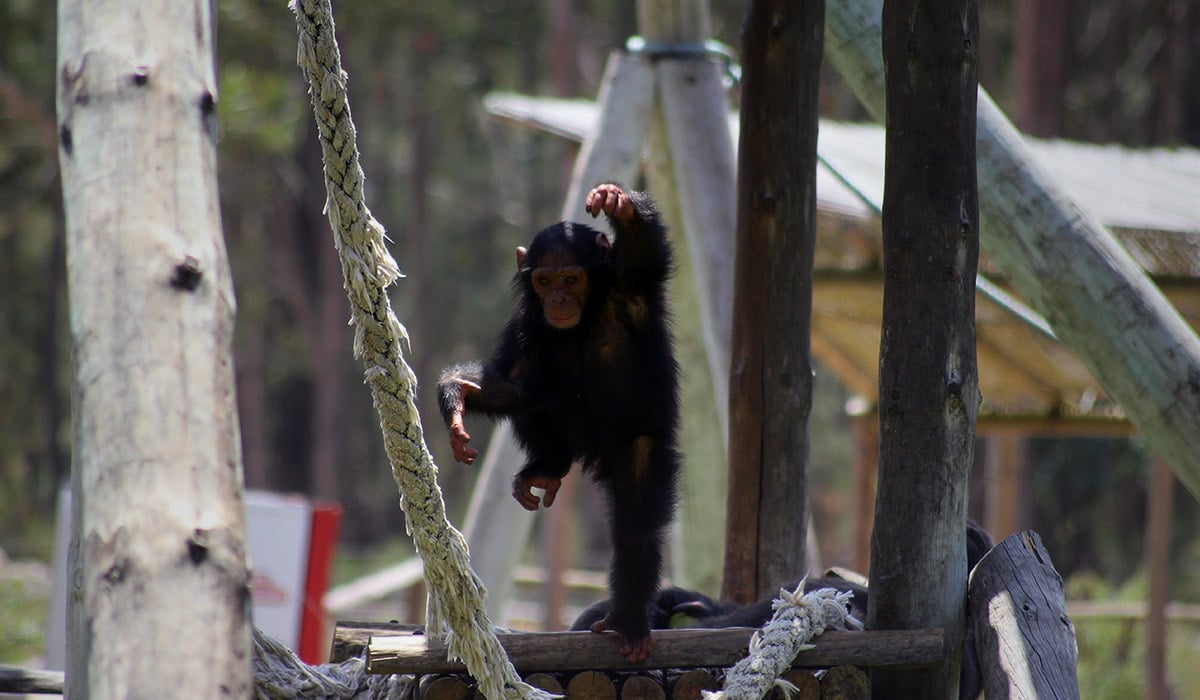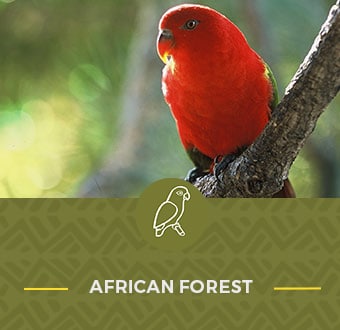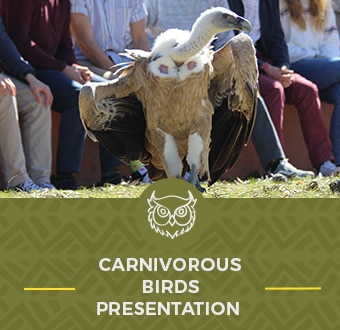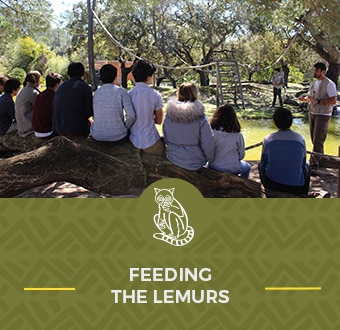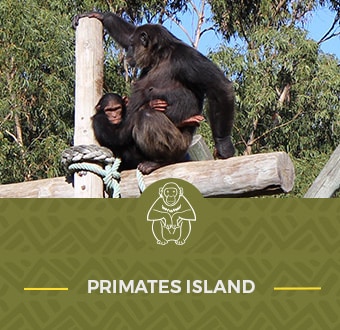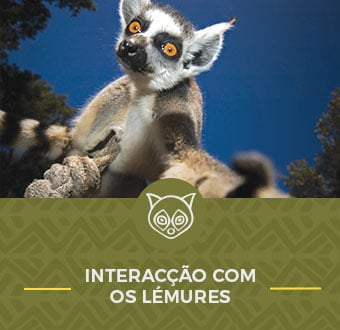Have fun observing our primates and their striking similarities to humans!
The great islands of primates, with their size and complexity, recreate a natural environment where common chimpanzees (Pan troglodytes) Sacred baboons (Papio hamadryas ) and Mandrills (Mandrillus sphinx) live happily. This facility consists of three islands of about 1600 square meters each, and a central collection area, which ensures a smooth management of the species in perfect safety and welfare conditions. In this way, primates live in conditions very similar to wildlife, and present innate behaviors. As ambassadors of their wild counterparts, they contribute to raising awareness on the importance of preservation and conservation of threatened species and their habitats.
In this space, the medical and veterinary team at Badoca Safari Park establishes a thorough monthly Environmental Enrichment program, where the islands are “enriched” in response to the behavioral demands of the species. Every week, structural novelties or changes in the facilities are introduced so as to stimulate the kind of behaviors that a healthy animal in its natural habitat would have. For example, the way of feeding the animals is based on novelties, variety and rewards. Food may be hidden, in one piece or scattered. In this way, seeds and honey are hidden inside tree trunks with holes, and the animals must use a stick to feed themselves, just like in Nature, where they have to find hives for honey and termite mounds for termites. Variety is also very important for taste, so the diet includes jelly, orange juice, various fruits, yogurt, rice, boiled egg or vegetables. Aromatic herbs such as parsley, coriander and rosemary are also planted to stimulate their sense of smell and natural curiosity.
Chimps at Badoca Safari Park
The family of common chimps (Pan troglodytes) living in Badoca Safari Park is formed by a male, two females and a baby. Jonas, the dominant male who loves to eat onions and tomatoes. Ema, who delights in throwing pines and fruit at the visitors and adores milk. Flor, the restless and cheerful chimp who loves to play with apples and throw them away, gesticulating actively to draw everyone’s attention, and Djambow, the little brat, very funny and playful and who likes to show off in front of the caretakers, “monkeying” around.
Chimpanzees are very agile, skillful animals who need complex environments for their strength demonstrations because they have constant physical activity. These animals are wildlife conservation icons since Jane Goodall started her field research in the 1960’s in Tanzania. The reason why they are so important is that since then, many physiological and etiological studies as well as fossils findings have shown just how similar these animals are to human beings. Chimps present a basic culture and they are able to solve problems using abstract intelligence. They have decision-making capacity, show empathy and are able to put themselves in someone else’s shoes, speculating on their thoughts. In the history of the evolution of species, they are our “close relatives” and we share a common ancestor. The first known primate appeared on Earth about 70 million years ago. The first hominids (Australopithecus) around 6 million years ago and the first men (Homo sapiens) just 50.000 years ago.
We share with chimpanzees approximately 98,4% of our genetic code.
Their presence at Badoca Safari Park gives us the chance to talk about the conservation of tropical bushes and the traffic of these animals to sell their meat (“bushmeat”), the use of animals in biomedical experiments, animal trafficking and the very history of evolution.




